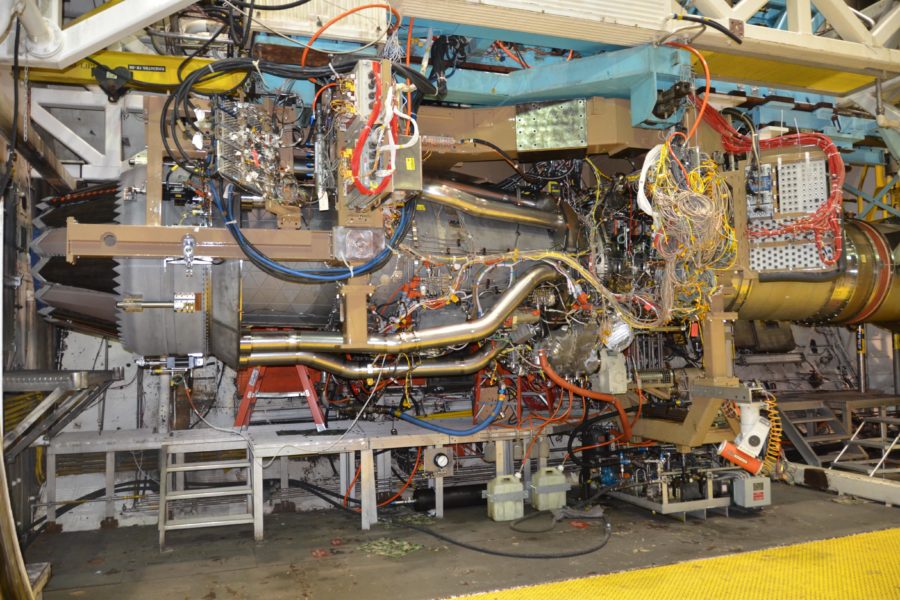Editor’s Note: This story has been updated to include comments from the F-35 Joint Program Office and to clarify some of the original comments.
New engine technologies emerging from the Adaptive Engine Transition Program are “vastly different” from those now flying on Air Force fighters, so retrofitting the current force with the new power plants may not be possible, the service’s program executive officer for fighters and advanced aircraft said Aug. 12.
The AETP technologies “really are future looking,” Brig. Gen. Dale R. White told reporters in a press conference associated with the Air Force Life Cycle Management Center’s recent Life Cycle Industry Days symposium. The AETP, based on previous advanced engine programs, got underway in 2016, and full-scale engine tests have been conducted this year. General Electric’s version is the XA-100, while Pratt & Whitney’s is the XA-101.
White is responsible for engines for most fighter programs but not for the F-35. A spokesman said White’s comments “were not a reflection of, nor indication to the F-35 propulsion strategy.”
The F-35 Joint Program Office said the AETP “is not currently an F-35 requirement,” but added that it is working with the AETP program “and our industry partners to evaluate this new engine technology for possible use in the F-35.”
The AETP is developing power plants using third-stream airflow to combine fuel-efficiency during cruise with quick-reaction high thrust in fighter engagements.
“The focus for now is how do we get the most out of what we already have fielded, versus where do we go in the future capabilities,” White said. There’s “only so much [more performance] we’re going to be able to get out of the … propulsion systems we have, and so we’re working very hard to figure out … what we can get out of that, what are some of those trades.”
The technologies in AETP are “very different than what we use on the fielded systems that we have,” he said. Where there are opportunities to make them “backward compatible,” he said, the Air Force will consider its options.
Changing the propulsion system on a fielded aircraft is “extremely complex, and there’s a lot that goes with that,” White said. “So you have to think about what the return on investment might be.”
He called out the F-22 as one platform where the directorate is looking at its Pratt & Whitney F119 engines for improvements “and whether or not we’re getting the most out of that system and [whether] we can do more for it.”
“Everything’s on the table” to improve the engine with regard to “climate, to efficiency, to thrust,” he said.
White said the AETP technologies would most likely apply to the Next Generation Air Dominance vehicle and other future designs, such as a clean-sheet fighter needed to replace the F-16.
Air Force and Pentagon leaders have hinted that future versions of the F-35 fighter could use new engines developed under AETP to save on fuel and gain performance. Even newly minted Air Force Secretary Frank Kendall suggested as much in his first interview with Air Force Magazine.
Senior Air Force leaders said in testimony this spring that wholesale replacement of engines already in service is not affordable within anticipated budgets.
Pratt & Whitney, maker of the F135, proposed a package of improvements for the engine to the Joint Program Office in March. The JPO is evaluating the proposal.

